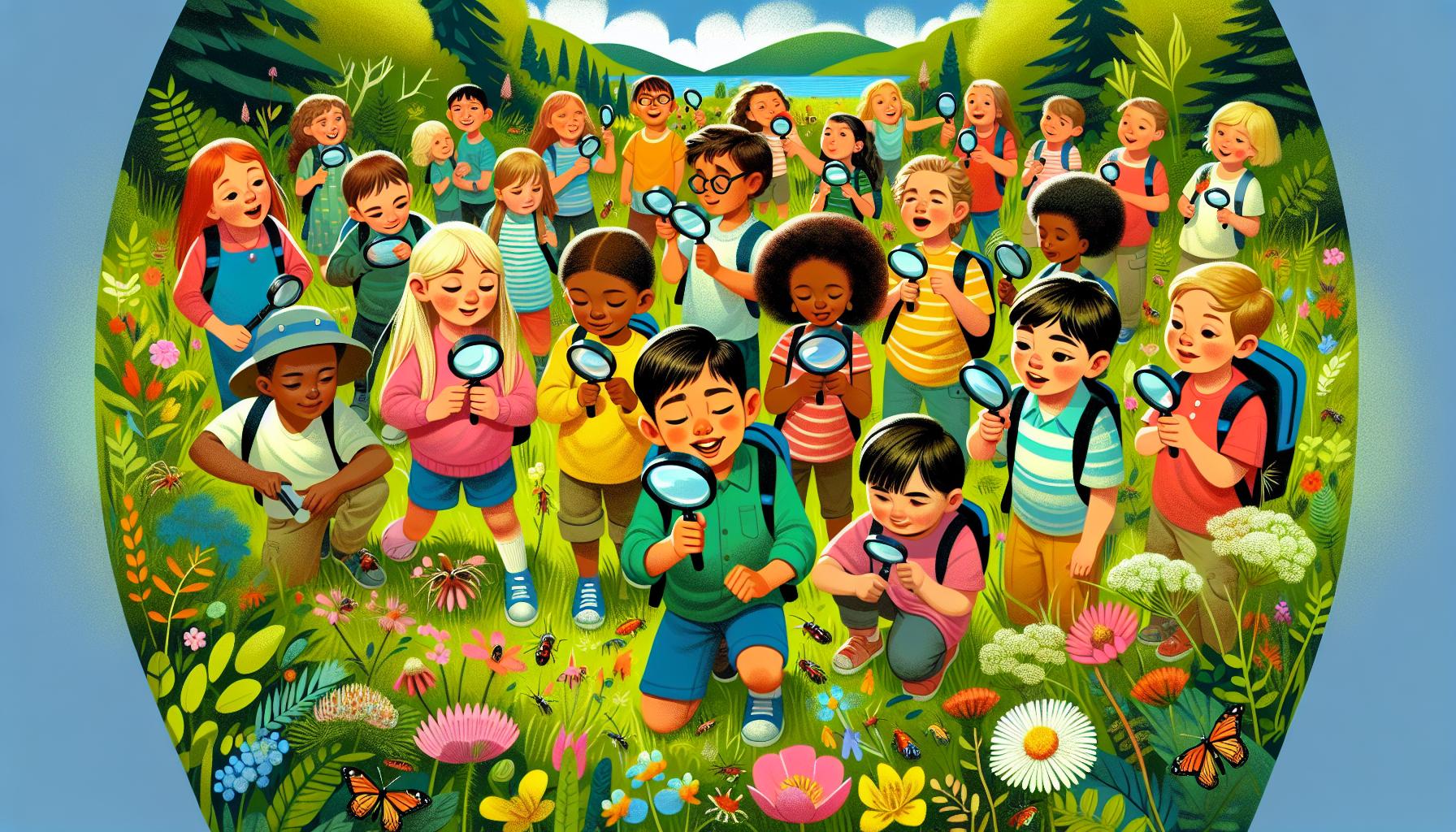
Key Takeaways
- Homeschooling combined with nature enriches learning experiences by fostering curiosity, creativity, and a deeper appreciation for the environment.
- Outdoor activities like nature walks, gardening, and wildlife observation offer hands-on lessons in science, math, and critical thinking.
- Nature-based learning supports physical health, reduces stress, and helps children build resilience and strengthen their connection to the natural world.
- Tools such as field guides, educational apps, and local community resources can enhance outdoor learning and expand opportunities for exploration.
- Balancing screen time with outdoor activities and adapting to weather changes ensures consistent and flexible engagement in nature-focused learning.
Homeschooling gives us the freedom to create learning experiences that truly inspire curiosity and growth. But have we considered how much nature can enrich this journey? From the vibrant colors of a forest to the quiet lessons of a blooming flower, the outdoors offers endless opportunities for hands-on education and wonder.
What if we could turn a simple walk into a lesson on ecosystems or use a garden to explore science and patience? Learning outside connects us to the world in ways that textbooks sometimes can’t. It encourages creativity, builds resilience, and fosters a deeper appreciation for the environment.
How can we weave more of nature into our homeschooling routines? Let’s explore how the natural world can become a living classroom, sparking curiosity and making learning feel alive for both us and our children.
Benefits Of Homeschooling And Nature
Incorporating nature into homeschooling offers children opportunities to explore, learn, and grow beyond classroom walls. Time spent outdoors can nurture creativity and foster a deeper understanding of the environment.
Fostering A Love For The Outdoors
Outdoor learning creates lasting connections between children and the natural world. Activities like birdwatching, hiking, or studying plants encourage curiosity and inspire a sense of wonder. By exploring parks or backyards, kids naturally develop an appreciation for their surroundings. What better way to teach responsibility for our planet than to let them experience its beauty firsthand?
Engaging in outdoor play also supports physical health and improves mental well-being. Running, climbing, or simply breathing fresh air promotes resilience and reduces stress. How often do we see children light up when they discover something new outside? This joy builds lasting memories and strengthens their bond with nature.
Enhancing Learning Through Nature-Based Experiences
Nature provides an exceptional platform for hands-on education. Simple tasks, like observing insects or counting tree rings, integrate science, math, and critical thinking into everyday moments. What if a walk through the forest became an interactive lesson on ecosystems or seasons? This approach transforms abstract ideas into tangible learning.
Gardening offers another rich learning opportunity. Planting seeds teaches biology, patience, and sustainability. Measuring growth connects math to real life. These shared experiences make homeschooling engaging and interactive. Are we leveraging these moments to help children connect subjects to the world around them?
Activities To Incorporate Nature Into Homeschooling

Incorporating nature into homeschooling deepens learning and sparks curiosity. Using outdoor settings, we can create hands-on educational activities that connect children with their environment.
Nature Walks And Field Trips
Exploring nature through walks and field trips introduces children to diverse ecosystems. Observing trees, animals, and weather patterns transforms simple outings into science lessons. We can encourage children to collect leaves, identify insects, or document bird calls in notebooks. Visits to parks, forests, and nature preserves expand these opportunities. How often do children have the chance to feel, hear, and see the subjects they study? These experiences strengthen learning engagement.
Gardening And Outdoor Projects
Gardening provides lessons on biology, patience, and environmental health. Planting seeds and nurturing their growth connects children to the Earth. Math and science concepts come to life through activities like measuring soil, tracking plant growth, or designing garden layouts. Building outdoor projects such as bird feeders or rain gauges adds skill-building exercises while aligning with environmental education. Which outdoor project sparks your child’s curiosity?
Wildlife Observation And Study
Observing wildlife teaches children about animal behavior and habitats. Setting up bird feeders or visiting ponds introduces them to local species. As they document changes in animal activity, they gain skills in observation and note-taking. Using tools like magnifying glasses or binoculars enhances this learning. Could exploring wildlife inspire curiosity about ecosystems and conservation? These studies help children grasp their role in protecting nature.
Tools And Resources For Nature-Based Learning

Incorporating nature into homeschooling becomes more effective with the right tools and resources. Access to diverse materials enriches outdoor learning, making it engaging and educational. What resources could make your nature-based lessons more impactful?
Books And Curriculum Recommendations
Field guides about plants, animals, and insects provide valuable knowledge for identifying local flora and fauna. Books with hands-on activity ideas can help structure nature lessons around topics like ecosystems, weather, and conservation. Educational curricula focused on outdoor learning often incorporate lesson plans, projects, and experiments, simplifying preparation for parents. Consider exploring materials that combine environmental science with storytelling to hold children’s interest.
Online Platforms And Educational Apps
Online tools connect children with global ecological lessons through videos, games, and interactive exercises. Apps that aid in plant and animal identification can transform outdoor excursions into discovery opportunities. Platforms offering virtual nature walks or tutorials about wildlife habitats enhance accessibility to distant environments. Look for resources that include age-appropriate content to complement your homeschooling goals.
Local Community Resources And Groups
Many communities host nature-focused programs, including workshops on gardening, birdwatching groups, or guided hikes. Local parks or nature centers might provide lesson plans, educational materials, or experiential learning opportunities. Connecting with homeschool cooperatives or parent groups could open doors to shared activities, from environmental clean-ups to planting projects. How could engaging with nearby resources broaden your homeschooling network?
Challenges And How To Overcome Them
Homeschooling with a focus on nature offers incredible opportunities, but it also presents some hurdles. By recognizing these challenges, we can create solutions that support both learning goals and family routines.
Balancing Screen Time And Outdoor Time
Striking a balance between screen-based learning tools and outdoor exploration can be difficult. Screens are useful for research and virtual lessons, while time spent outside is essential for hands-on experiences. Too much reliance on either can limit the benefits of the other.
To address this, set specific times for screen use and outdoor activities. For example, online research can precede an outdoor project like identifying local plant species. Technology-free moments in nature encourage children to focus on their surroundings, developing observation skills. A daily or weekly schedule helps maintain this balance, enabling consistent engagement with both mediums.
What activities could combine digital tools with outdoor learning? Consider using apps for bird identification during a nature walk or creating digital journals of outdoor observations.
Managing Weather And Seasonal Changes
Weather conditions and seasonal shifts can disrupt outdoor plans or reduce enthusiasm for nature-based activities. Rain, snow, or extreme heat may make certain activities less feasible, and shorter daylight hours in winter can limit outdoor time.
Adapt plans by embracing the seasons rather than avoiding them. If it’s raining, explore soil absorption or study weather patterns. During snow, study animal tracks or measure and graph snowfall. Adjusting the focus during extreme weather keeps lessons active without forcing children into uncomfortable conditions.
What seasonal activities can make outdoor learning engaging? Creating a seasonal journal or observing how natural environments change over time can build connections to weather cycles while keeping children curious and involved.
Benefits can persist year-round if we stay flexible and encourage creative approaches to nature-focused learning.
Conclusion
Homeschooling with a focus on nature opens doors to endless learning opportunities and meaningful experiences. By stepping outside, we can transform everyday moments into dynamic lessons that nurture curiosity, creativity, and a deeper connection to the environment.
Embracing the natural world in our homeschooling routines not only enriches education but also fosters a sense of wonder and responsibility in our children. With the right tools, resources, and a flexible mindset, we can overcome challenges and make nature an integral part of the learning journey.
Let’s inspire our children to explore, discover, and grow through the beauty and lessons that nature provides.
Frequently Asked Questions
What are the benefits of incorporating nature into homeschooling?
Incorporating nature into homeschooling enhances curiosity, creativity, and hands-on learning. Outdoor activities promote physical health, mental well-being, and a lasting connection to the environment. It also makes learning interactive and engages children in subjects like science, math, and sustainability.
How can outdoor learning improve education?
Outdoor learning turns simple activities like walking, gardening, or observing wildlife into valuable lessons. It deepens understanding of ecosystems, fosters critical thinking, and makes subjects like biology, science, and math relatable through real-world applications.
What are some nature-based activities for homeschooling?
Great activities include gardening, nature walks, hiking, birdwatching, and wildlife observation. These activities teach concepts like biology, animal behavior, and conservation while promoting creativity and curiosity through hands-on exploration.
Are there tools to support nature-based homeschooling?
Yes! Tools like field guides, nature-focused books, and online resources such as apps or educational videos can enhance lessons. Additionally, outdoor-based curricula and local community programs simplify planning and broaden learning opportunities.
How can families overcome challenges with outdoor homeschooling?
To address challenges like weather or screen time, plan flexible lessons and balance indoor and outdoor activities. Use seasonal changes as learning opportunities and incorporate technology for tasks like bird identification or nature logging.
How does nature-based learning promote environmental responsibility?
By engaging directly with ecosystems, children learn about conservation and sustainability firsthand. This fosters a sense of responsibility and appreciation for preserving nature through everyday lessons and observation.
Can outdoor learning be integrated year-round?
Absolutely! Seasonal changes provide unique educational opportunities. Adjust activities, such as observing snow patterns in winter or studying plant growth in spring, to maintain engagement and curiosity throughout the year.
What skills do children develop from nature-based homeschooling?
Children enhance skills like observation, note-taking, critical thinking, patience, and problem-solving. Nature-based activities also improve physical coordination, resilience, creativity, and a deeper understanding of real-world concepts.

